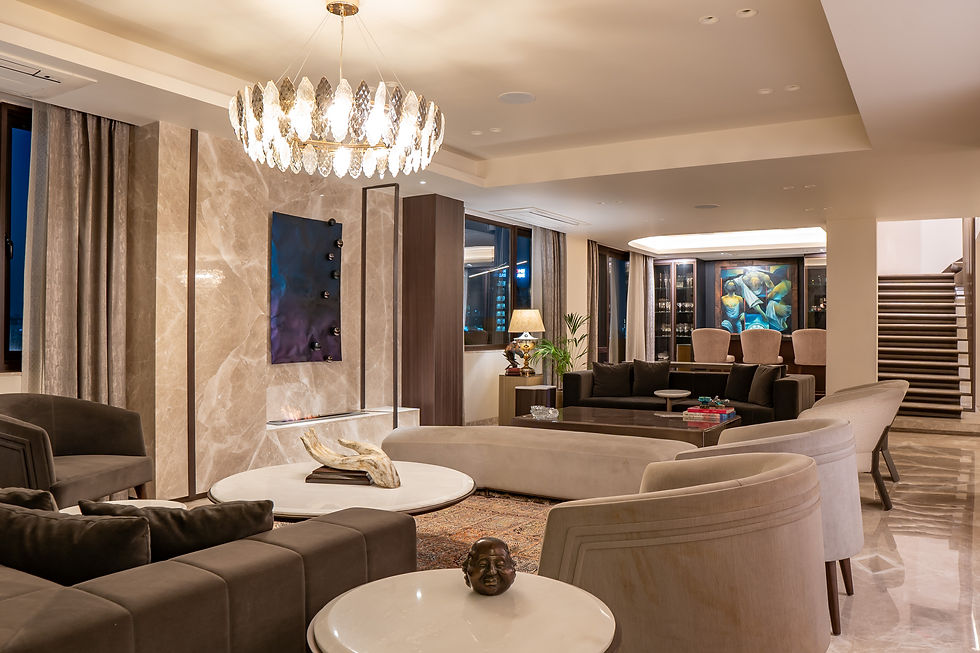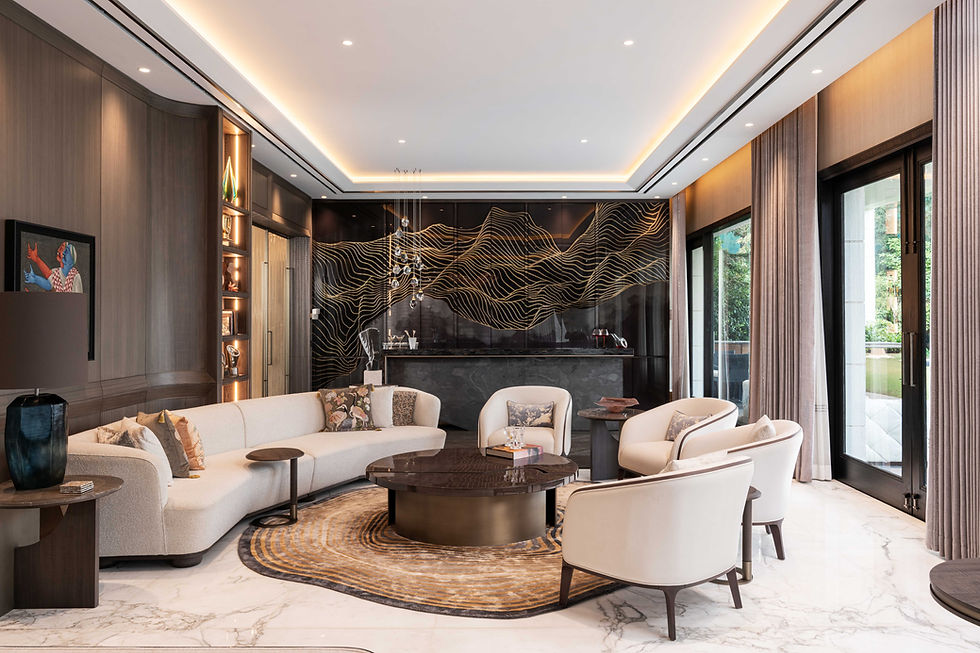Why Custom Furniture Still Matters
- Marketing FTS
- Jul 22
- 3 min read
Designing pieces that respond to space, story, and stillness.
In an era of mass production and fast design, custom furniture can seem like a luxury. However our design principles deem it as quietly essential to every space we shape. Not merely for display, but to inspire emotion and ground the space.

Our approach to custom furniture isn’t about novelty. It’s about deep responsiveness to a space’s proportions, to a client’s pace of living, and to the emotional atmosphere that we’re designing. A chair or a table isn’t just a functional object; it’s a continuation of the architecture and must be shaped by the same intentions.
A Response, Not a Solution
We don’t design in isolation. Each furniture piece is born from the space it belongs to—from the light it will reflect to the textures that surround it.

In the ZOII wellness space, custom armchairs, consoles, and curved tables were created not only to support functionality but also to preserve the clarity of the space’s soft geometry. Their forms echo the curved walls; their materials align with the overall language of calm. Standard furniture would have disrupted the rhythm. These pieces were made to dissolve and hold space at once.
Proportion is Emotional
One of the greatest strengths of custom furniture lies in its ability to calibrate scale — not just for aesthetics, but also for how a space makes you feel.

In our DLF Camellias project, the mood is grounded and immersive. The palette is dusky, the textures tactile, and the furniture echoes that mood with low, expansive seating designed for pause. The custom sofas were conceived with a wide, reclined depth – inviting rest without interruption. Their weight balances the openness of the living area, anchoring the room while allowing it to feel spacious and calm.
It’s this subtle sense of proportion that makes a room feel intuitively right not overfilled, not sparse, but held.
Material as Memory
Custom furniture also gives us the opportunity to extend material relationships across a home creating continuity that isn’t always loud, but always felt.

In the Heritage City residence, we used natural wood, metal, and stone details to design a series of bespoke pieces that feel embedded in the architecture rather than placed into it. A console was designed to echo the nearby screens, and a handcrafted dining table reflects the tonal variation of the adjacent flooring and walls. These details don’t compete—they connect. They stitch the room together.
This kind of material layering is only possible when pieces are created with the space itself in mind.
Objects that Belong
More than anything, custom furniture allows a space to feel personal. Not styled. Not decorated. But truly lived in.
When a piece is designed for the way someone sits, for the way light hits it at 10am, or for the memory it might carry forward – it becomes something that belongs. Not just to the room, but to the person.

Designed to Last
Custom also means slow. Thoughtful. Made with intention and durability. These are not pieces made to be replaced, but to be inherited by the home itself.
In resisting the fleeting, we design furniture that endures, physically and emotionally.

Custom furniture still matters because it’s not about more for the sake of it, it’s about meaning. At FTS by Sharmilee, we use it as a way to ground a space, hold a mood, and invite a kind of stillness that lasts beyond the trend cycle.
Because in the end, a room should feel like it was always meant to be that way. And every piece in it should quietly agree.




Comments